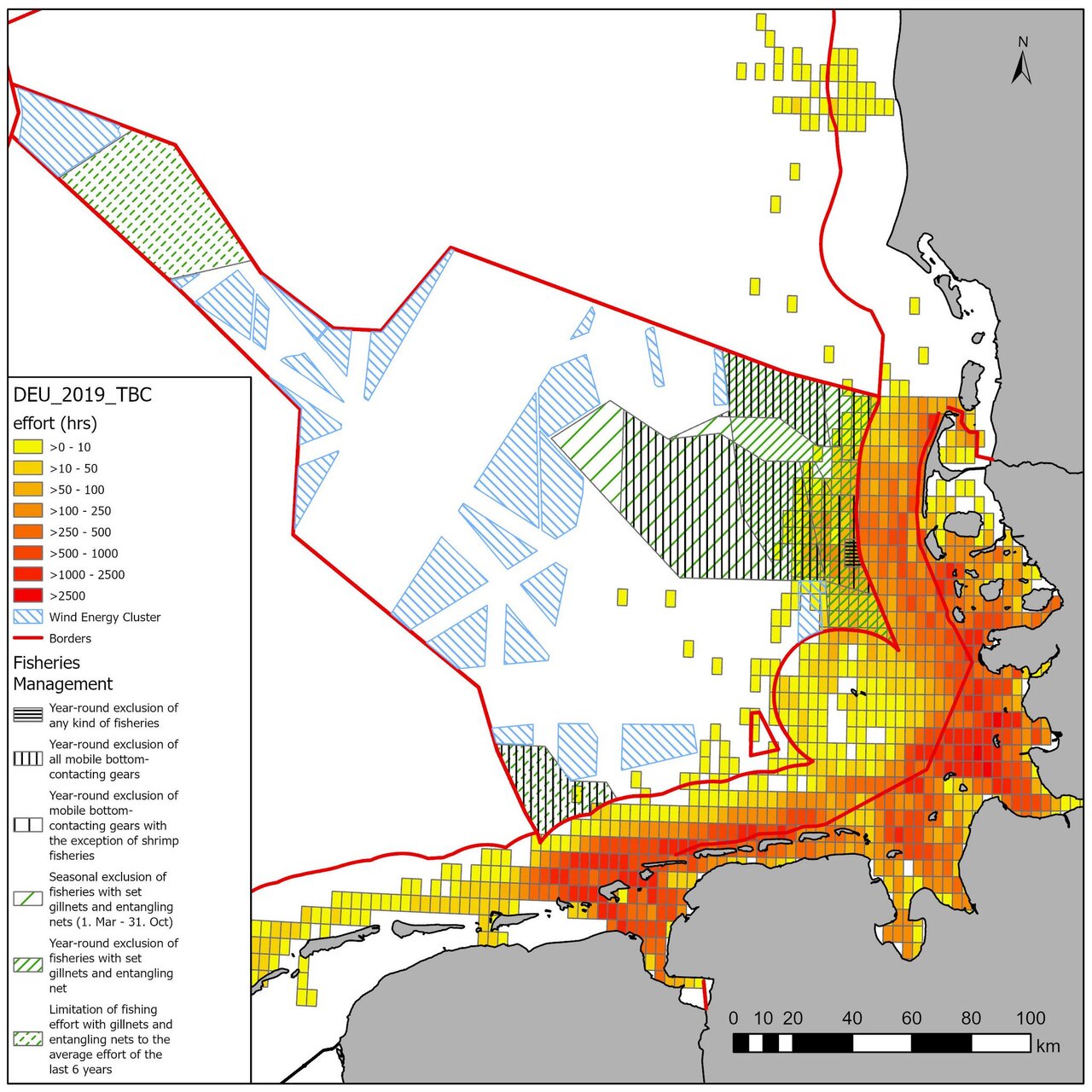Project
Impact of Natura 2000 management measures

Economic analysis of the impact of planned nature conservation measures in Natura 2000 areas on fisheries in the North Sea and Baltic Sea
Fisheries in marine protected areas should be specially regulated. We analyse the impact of these planned measures on fisheries.
Background and Objective
Germany is obliged to preserve or restore the species and habitats to be protected in Natura 2000 areas of its Exclusive Economic Zone (EEZ) in the North Sea and the Baltic Sea. This requires regulations that prohibit fishing with certain fishing gear completely or temporarily in order to conserve and protect certain species or habitats. These measures necessary to achieve this may mean that these areas will no longer be usable by certain fishing fleets, or will only be usable to a limited extent. In our project we analyse the consequences this may have for fisheries
Target Group
Politics, stakeholder, science, general public
Approach
In order to analyse the effects of spatial and temporal regulation of commercial fisheries, data on the effort and revenues of fisheries are first combined with the exact positions where the catches took place The next step is to compare these data with the restrictions that the planned regulations will have on fisheries. These comparisons shall consider the consequences for effort, catches and revenues of the fleets concerned.
Data and Methods
Data from the fishing logbooks and from catches landed in ports describe the type of gear (e.g. beam trawl or bottom set gillnet) used by a fishing vessel to catch fish of different species, when and how many fish were caught and the revenues from the sale. However, since this data is spatially relatively rough, we also use additional data from a satellite-based system that records the exact position and speed of all fishing vessels longer than 12 metres every two hours. This data from the so-called Vessel Monitoring System (VMS) can be combined with the data from the logbooks. This enables us to estimate much more precise at which place a fishing vessel caught how much fish. Only with the help of such high resolution spatial data catch losses caused by the new fishing regulations in the Natura 2000 areas can be estimated with sufficient accuracy. For the analysis of the data and the cartographic representation of the results we use the freely available programming language R as well as the program ArcMap from ESRI.
Our Research Questions
- What are the impacts of Natura 2000 management measures on commercial fisheries?
Preliminary Results
Reports to advise the relevant ministries, in particular the German Federal Ministry of Food and Agriculture (BMEL)
Thünen-Contact

Involved Thünen-Partners
Duration
1.2014 - 12.2027
More Information
Project status:
ongoing
Publications
- 0
Schulze T (2018) International fishing activities (2012-2016) in German waters in relation to the designated Natura 2000 areas and proposed management within. Hamburg: Johann Heinrich von Thünen-Institut, 174 p
- 1
Sell AF, Pusch C, Dorrien C von, Krause J, Schulze T, Carstensen D (2011) Maßnahmenvorschläge für das Fischereimanagement in Natura 2000-Gebieten der deutschen AWZ der Nord- und Ostsee. Hamburg ; Rostock ; Insel Vilm: vTI ; BfN, 299 p






